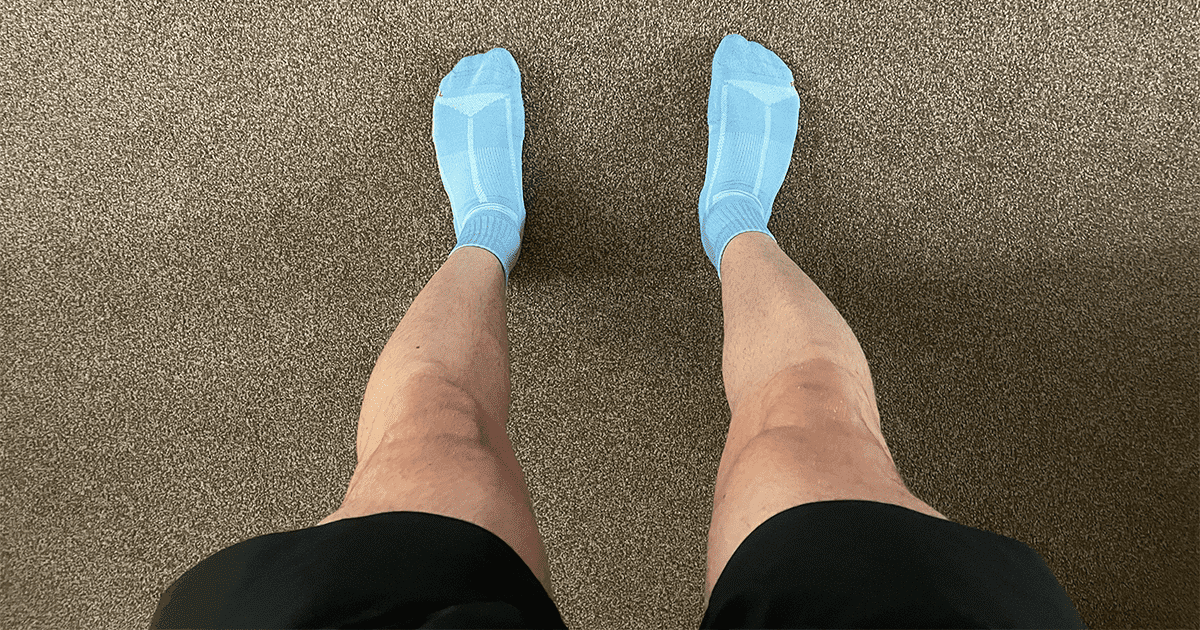The ultimate guide to winter running for beginners
What to wear, when to run, and how to stay motivated for winter running and training.

With the shorter, colder, and darker nights approaching, the last thing many of us want to do is lace up, head out the door and run. While winter running may be the last thing we want to do, training right through the winter will allow us to build a solid base for spring and summer before we start interval and track training. This is ideal for achieving and breaking our personal bests whatever the distance.
To keep your training on track, we’ve created this blog post – the ultimate guide to winter running for beginners. Here’s what you need to know.
How cold is too cold to run?
Is there such thing as it being too cold to run? Yes. In an article from runner’s world, Stephen Fealy, M.D, a sports-medicine physician at New York’s hospital for special surgery advises runners to run for no longer than 30-minutes in temperatures below -17 Celcius (0 degrees Fahrenheit). This increases our risk of developing conditions such as hypothermia and frostbite. Likewise, running in conditions this cold reduces our ability to feel pain. This is extremely dangerous, increasing our risk of injury and not knowing when we’ve pushed our bodies too far.
I have a cold, should I still run?
Colds are common winter, but this doesn’t have to stop you training all for a blocked nose and a sore throat. A standard test to see whether or not you should be running is the neck check. Any symptoms above the neck, sore throat, blocked nose, and a cough and you’re generally fine to run. However, symptoms below the neck such as achy muscles, high temperature, and a tight chest will more often than not have you sitting this one out. Check out the article below for everything you need to know about running with a cold.
Related: Running with a cold: what you need to know.
The importance of a warmup and cooldown in winter
A proper warmup and cooldown are even more important during winter. Undergoing a warmup before your run will increase the blood flow to our working muscles while preparing our body for the activity of running. Running with cold muscles will increase our risk of pulling a muscle and further injury. Warming up increases the blood flow to these muscles, reducing this risk.
When cooling down, ensure to perform your static stretches indoors to stay warm, reducing your risk of catching a cold and a sudden drop in body temperature.
Cross-training

In times where it’s simply too cold, too dark or you simply cannot be bothered to run, there is always cross-training. Whether interested in cycling, swimming, or hitting the gym, there are so many cross-training options available to keep you busy. Whatever you choose, you’re sure to find something to suit you.
Aerobic cross-training activities such as cycling (both indoors and out), swimming, and rowing are all great for maintaining and even developing our cardiovascular fitness and strength throughout the winter. Whereas strength training (including core workouts) are great for developing running-specific strength while reducing our risk of injury.
Whether you’re able to run or not during winter, including both aerobic and strength exercises will allow you to take your running to the next level. You’ll also be able to maintain and potentially improve your cardiovascular fitness come spring.
Related: The ultimate guide to cross-training for runners.
Treadmill running
As winter running can be so cold, cross-training just like treadmill running is a godsend this time of year. Keeping us safe and warm from the weather and traffic on those dark roads and paths, running on the treadmill is an excellent choice for winter.
With the ability to keep up with your regular running sessions or workouts such as interval training, tempo running, or even the dreaded long run, treadmill running prevents us from falling behind on our training. With only a quick drive or mere sprint to your nearest gym, treadmill running is the answer to all of your problems. Well, most of them.
Related: Treadmill running: what you need to know.
How to stay motivated for winter running
Staying motivated to run during the winter months can often be challenging. Perhaps due to the change in weather, the darker nights, and the all too common downpours. To motivate you to lace up and get out the door to run or workout, we’ve come up with a few tips.
1. Run with a friend
Running with a friend is a great way to increase motivation, especially in winter. Make a regular routine out of it and meet up once or twice a week, allowing for a good catch-up and increased accountability. Running harder workouts such as tempo runs during winter will allow yourselves to push each other. Fundamental to your success as a runner.
2. Listen to some music

Music solves many problems. Use it to your advantage, put your earphones in and pound the pavement while listening to your favourite track or playlist. Not only will this increase your enjoyment, but it will also allow you to run to go in much faster. You’ll be back in the warmth and sat by the fire in no time.
3. Set some goals

A popular method to increase motivation within athletes of all kinds is goal setting. During winter, setting yourself long-term goals and short-term goals is an excellent way to stay motivated.
Long-term goals may include breaking your personal best in spring, building up to a 16-mile long-run or running a total of thirty miles for a week. Short-term goals are almost like checkpoints. These are the goals you will tick off along the way to reach your long-term goal. For example, using the previous example of running thirty miles for a single week, your short-term goals may be to run 20 one week, 25 the next, and then finally your long-term goal of 30.
Setting short-term goals increase our confidence to be able to achieve our long-term goals. Be sure to set challenging yet achievable goals to give yourself a real challenge, while still allowing room to improve.
Related: 20 running quotes to motivate you for your next run.
What to wear when running in the winter?
Winter running conditions are much more demanding than any other time of year. You’ll want to prepare in advance with a pair of running shoes with good grip, a headtorch to see during those dark runs, a pair of running tights to keep your legs warm, a pair of running gloves, and plenty of half-zip, and long-sleeved t-shirts to keep ourselves nice and warm regardless of how low the temperature drops.
Increased visibility
Whatever you decide to wear, ensure to use reflective materials to increase your visibility to other road users and pedestrians. If possible, when dark, avoid roads and stick to well-lit cycle tracks and paths.
Tip: It’s better to dress for the worse and later remove clothing layers.
Winter running shoes
Winter running shoes are often a popular option for those looking for improved grip and waterproofing. Keeping our feet nice and dry while preventing the occasional slip on ice or wet ground, winter running shoes are an excellent choice if you’re going to put in some serious miles.
Some of our favourite winter running shoes include:
- Nike zoom Pegasus 35 shield – click here to buy now via Amazon!
- Adidas Ultraboost all-terrain shoes – click here to buy now!
- Merrell trail glove 4 shield – click here to buy now via Amazon!
Related: Best winter running gear to beat the cold.
A final thought
Winter running is challenging, although it can be made easier. If your motivation begins to slide, consider running with a friend or playing your favourite tracks. Ensure to dress for the weather and ALWAYS remain visible.

Matthew is a lifelong runner, chief tester of all products, the founder of Running101, and freelance content writer for active brands. When he’s not writing, he enjoys lifting weights, cycling in the Lake District, and watching fast cars drive in circles on a Sunday. He also has a BA in sport, exercise and physical activity from the University of Durham.




